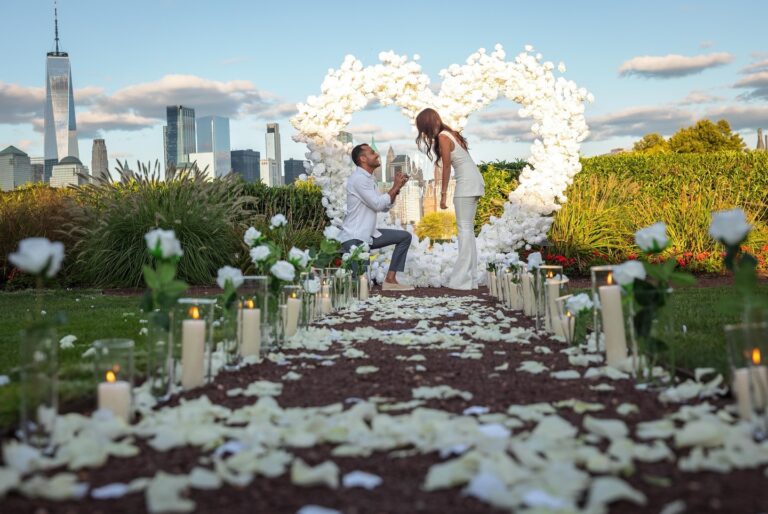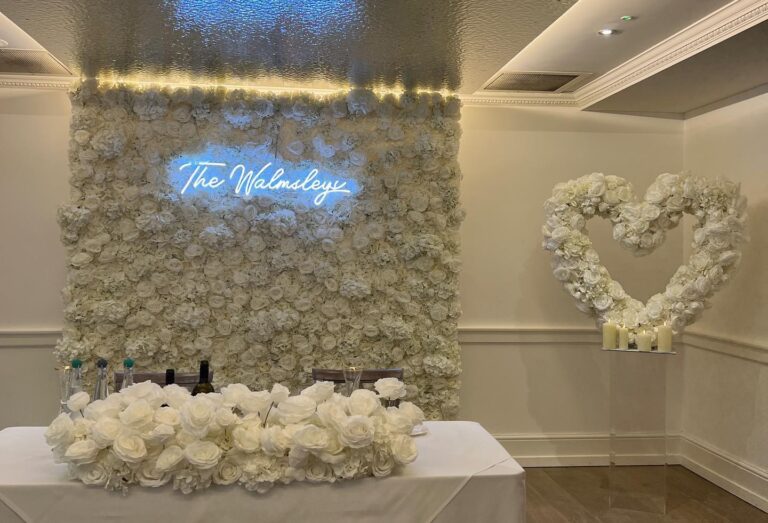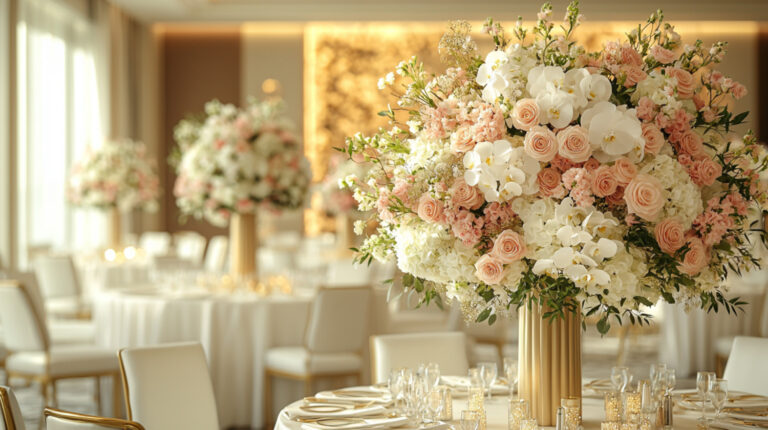How Much Do Wedding Flowers Cost in 2025? The Only Guide You’ll Need
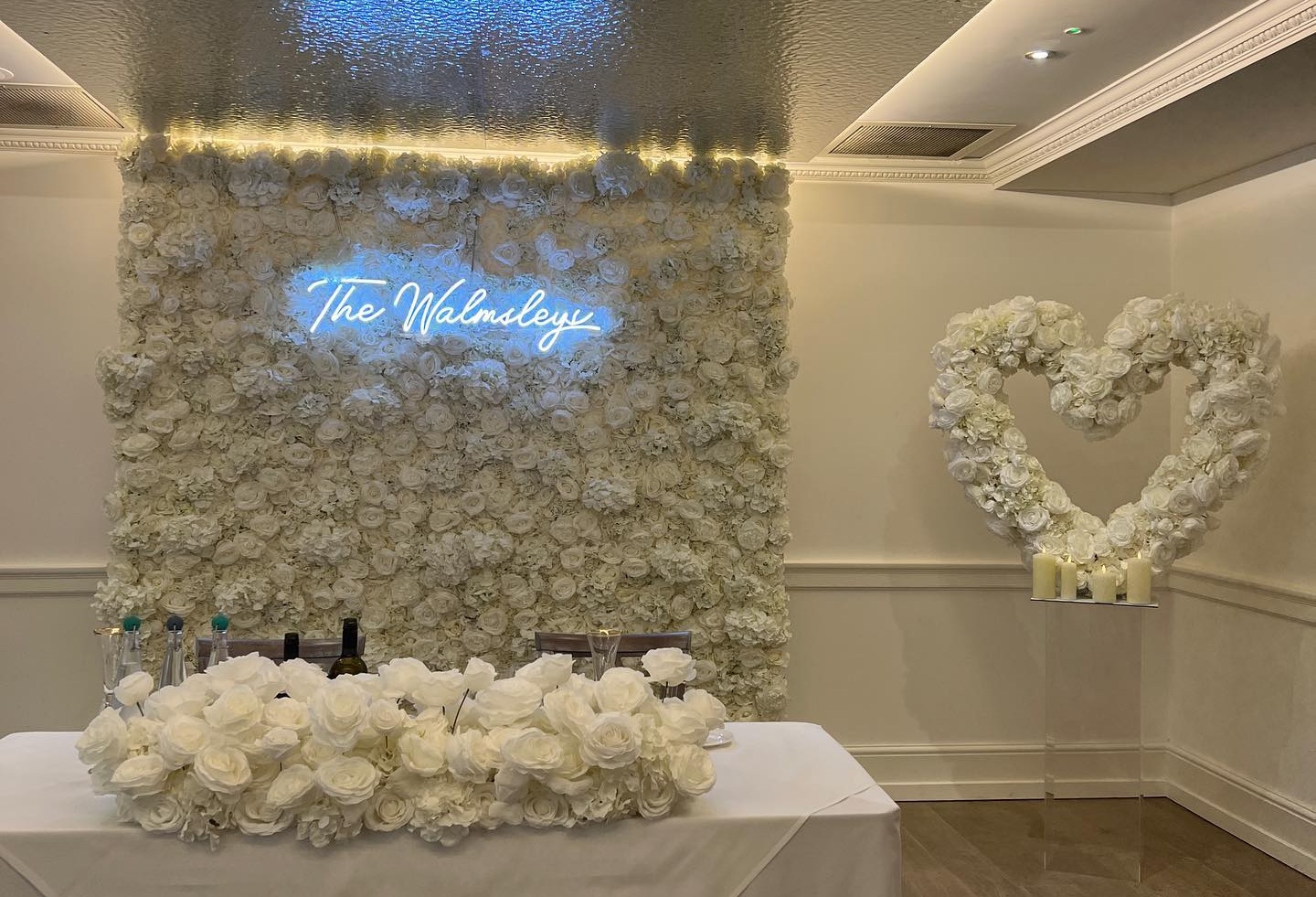
Wedding flowers aren’t just décor – they’re the living, breathing thread that ties your entire event together. From bouquets to arches, they set the tone, show up in almost every photograph, and often become one of the most memorable details for guests. But they also come with a big question: how much do wedding flowers actually cost?
This guide pulls together the latest industry data, expert insights, and real-world examples to give you the clearest picture possible. Whether you’re planning a micro-wedding or a luxury gala, this is your definitive starting point.
The Short Answer: National Averages & Budget Benchmarks
The average U.S. couple spends about $2,200–$2,700 on flowers in 2025. Most budgets fall between $500 and $3,500, though luxury weddings can easily exceed $20,000.
A common rule of thumb: allocate 8–10% of your overall wedding budget to florals. If flowers are a top priority (say, you dream of a lush floral arch or ceiling installation), plan closer to 12–15%.
What That Buys You
- 50 guests or fewer (~$1,200): Bridal bouquet, a few bridesmaid bouquets, boutonnieres, and modest centerpieces.
- 100–150 guests (~$3,000–$5,000): Full personals, ceremony arch, a mix of low/tall centerpieces, head table florals.
- 200+ guests ($7,500+): Statement installs, large ceremony arrangements, multiple repurposed designs.
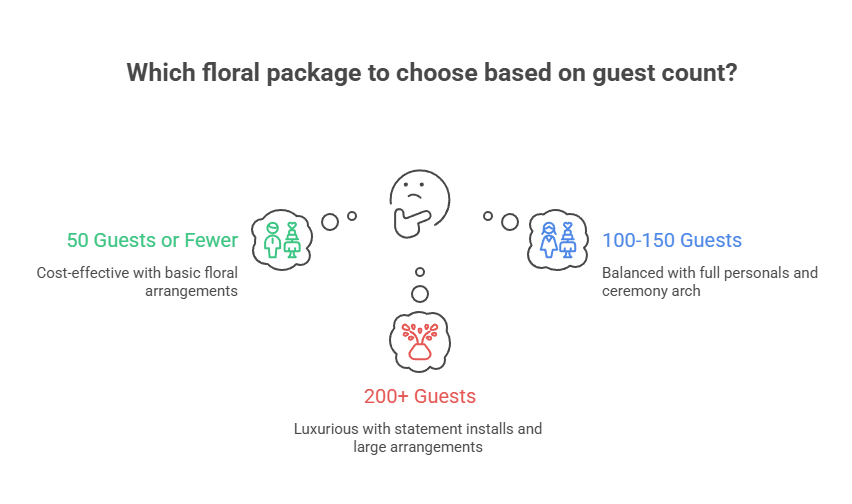
Where the Money Goes: Itemized Floral Costs
Here’s a snapshot of what you can expect to pay for common floral elements:
- Bridal bouquet: $195–350
- Bridesmaid bouquet: $95–150
- Boutonniere: $15
- Corsage: $18
- Flower crown: $45–65
- Ceremony arch: $650–5,000+
- Low centerpiece: $145–250
- Tall centerpiece: $250–550
- Head table runner: $500+
- Cake florals: $25–65
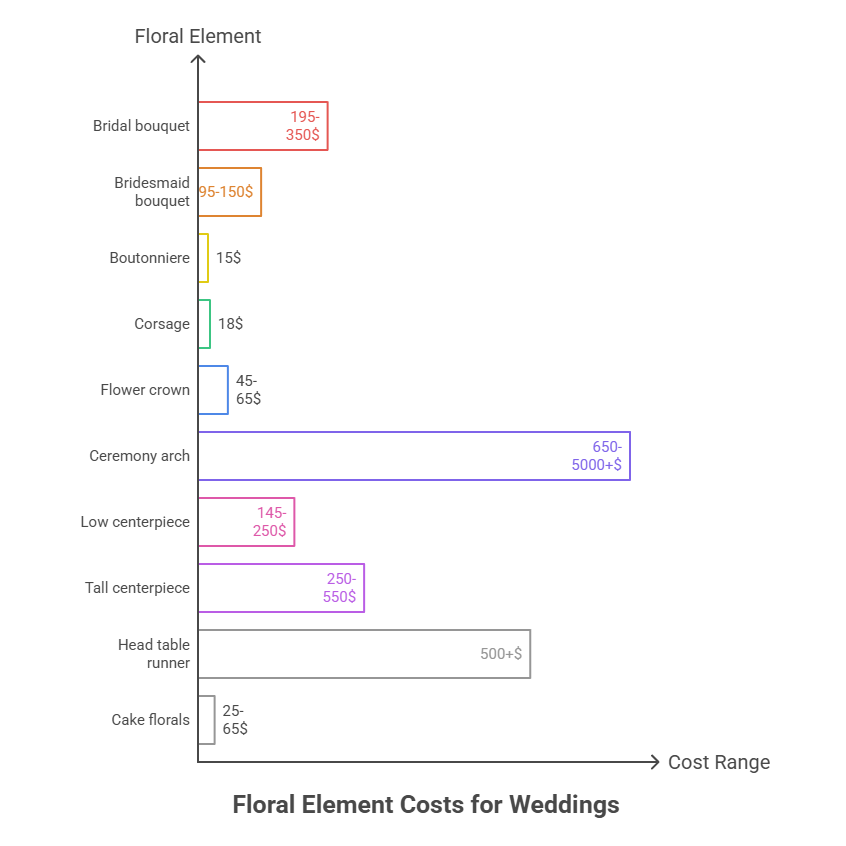
What Drives the Price: The 7 Levers You Can Control
Seasonality & Stem Selection
- In-season flowers (like spring tulips or summer dahlias) are cheaper than imports.
- Peonies in December? Expect a big markup.
- Tip: Build around a color palette, not a single flower.
Guest Count & Venue Layout
- More tables = more centerpieces.
- Long banquet tables often require floral runners or clusters instead of single pieces.
- Venues with rigging restrictions or union staff add labor fees.
Region & Market
- Coastal cities see higher averages ($3,000+).
- Destination weddings incur freight costs.
- Small-town weddings often fall closer to $1,500–$2,000.
Design Complexity & Labor
- Large installs (arches, ceilings, hanging florals) require ladders, mechanics, and a full team.
- Delivery, setup, and breakdown are built into quotes.
Fresh vs. Silk Rentals vs. DIY
- Fresh: Traditional, fragrant, premium but pricey.
- Silk rentals: ~$500 average full order; huge savings with realistic look.
- DIY: Can save, but add hidden costs—tools, transport, and stress.
Logistics & Operations
- Cold storage, transport vans, strike crews—these costs often surprise couples.
- Ask your florist for a clear labor breakdown.
Generational & Style Preferences
- Millennials average higher floral budgets ($3,000+) than Gen Z ($2,300).
- Pinterest-driven inspiration boards can inflate expectations.
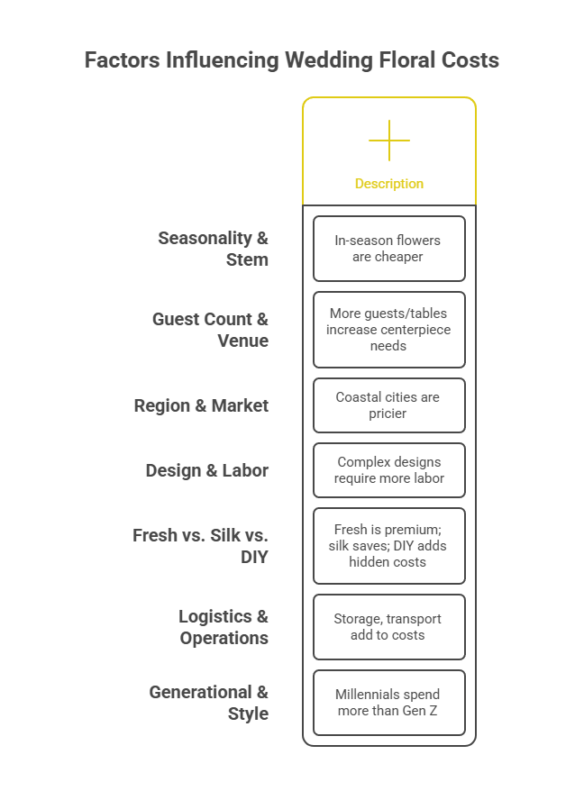
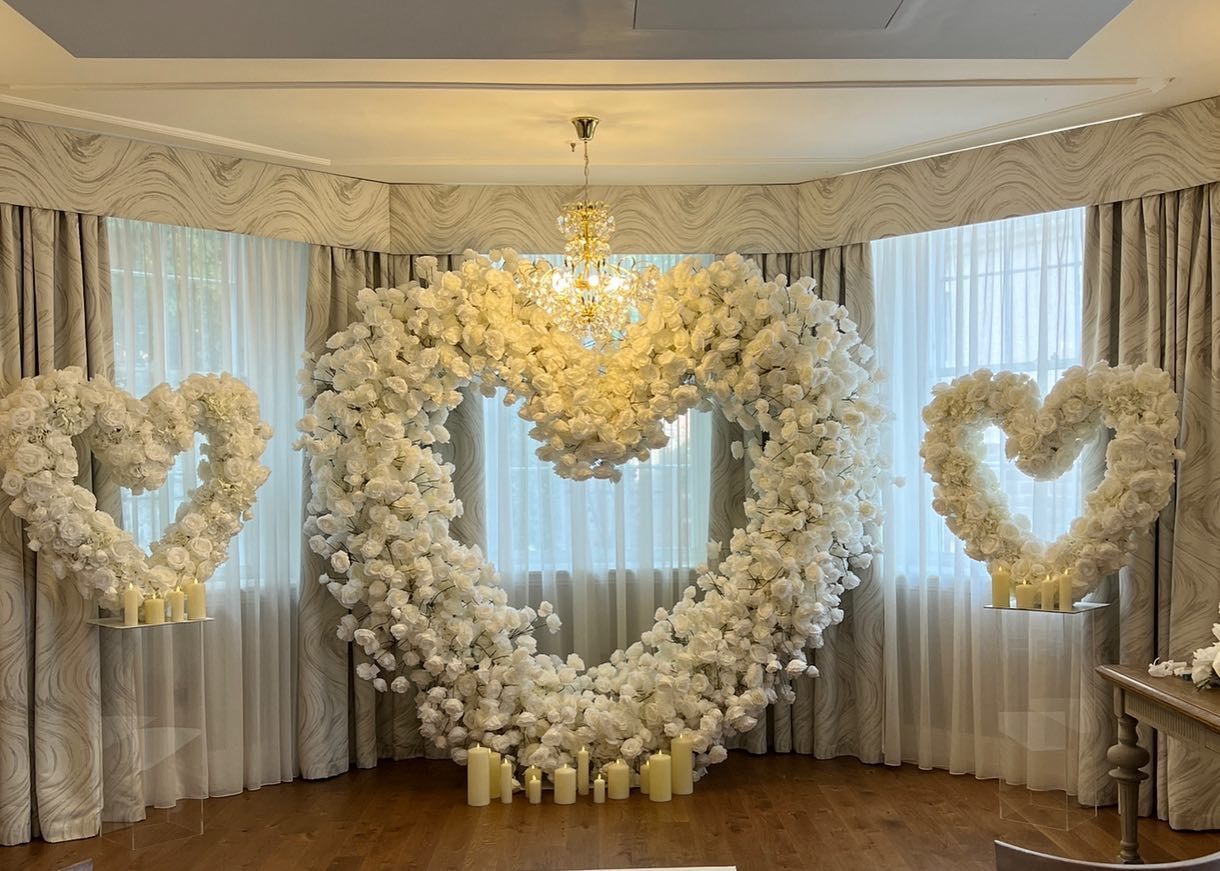
Step-by-Step: How to Get Accurate Quotes
- Prep Your Brief: Note guest count, table types, must-have pieces, allergy concerns, and color palette.
- Reach Out to 3–5 Florists: Ask for line-item quotes, labor fees, and repurposing options. We are a professional wedding flower manufactuer over 15 years!
- Compare Apples to Apples: Use a side-by-side sheet to compare proposals.
- Negotiate Smartly: Trade stems, repurpose décor, or scale down ceremony installs.
- Lock in with a Contract: Clarify payment schedules, substitutions, and deadlines.
Smart Ways to Save (Without Looking Cheap)
- Repurpose ceremony florals for reception décor.
- Use bud vases or mixed candlelight for impact at lower cost.
- Balance focal blooms (roses, orchids) with greenery or filler stems.
- Simplify mechanics—low compotes instead of tall glass towers.
Sustainability & Ethics
Eco-conscious couples increasingly ask: where do these flowers come from?
- Support local growers when possible.
- Ask about foam-free mechanics and reusable vessels.
- Donate or compost florals post-event.
- Silk rentals cut waste and can be reused hundreds of times.
Design for the Camera
- Colors appear differently on camera—avoid white-on-white unless offset with greenery.
- Tall installs look dramatic in photos but block guest sightlines.
- Strongly scented flowers can overwhelm at dinner tables.
Special Considerations
- Cultural weddings: Garlands, mandaps, chuppahs—often floral-heavy.
- Allergies: Opt for orchids, hydrangeas, or roses (low pollen).
- Weather risks: Backup plan for extreme heat or frost.
The Future of Wedding Florals
- More climate-resilient varieties bred for durability.
- Silk-fresh hybrids (fresh personals, silk installs).
- Rising freight and tariff costs continuing to push averages up.
Latest and Popular Artificial Flowers You Can't Miss!
Real Budgets, Real Weddings
- $2,500 micro-wedding: Small personals + bud vases.
- $7,500 mid-size: Arch + mixed centerpieces + head table.
- $20,000 luxury: Full floral ceiling + multiple ceremony installs.
Tools & Checklists
- Floral Cost Calculator: Estimate by guest count and style.
- Quote Comparison Matrix: Evaluate vendors side-by-side.
- Repurposing Map: Track which pieces move from ceremony to reception.
- Day-Of Checklist: Who’s handling delivery, set-up, strike?
Myths to Debunk
- “Greenery is always cheaper.” Not always—labor to install greenery garlands can rival flowers.
- “DIY saves money.” Factor in waste, tools, and stress.
- “Silk flowers look fake.” High-end rentals photograph beautifully.
- “Seasonal always means cheaper.” Some seasonal stems (peonies, ranunculus) are still premium.
Timelines: When to Book and Decide
- 12–9 months: Gather inspiration, book venue.
- 9–6 months: Contact florists.
- 6–3 months: Finalize designs.
- 4–6 weeks: Confirm counts, logistics.
- Week-of: Confirm delivery/strike schedule.
- Post-event: Donation or preservation (pressing, resin, freeze-drying).
Wrap-Up: Budget With Confidence
Wedding flowers are one of the most flexible parts of your budget. By understanding the 7 levers that drive cost, setting clear priorities, and using smart repurposing, you can get the look you want at a price that makes sense. Your next step: write down your top three “must-have floral moments” before requesting quotes—that clarity will save time, money, and stress.

